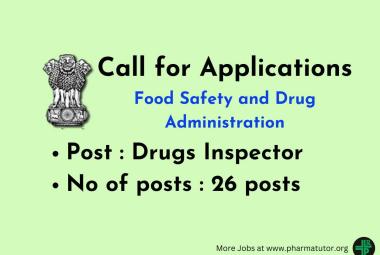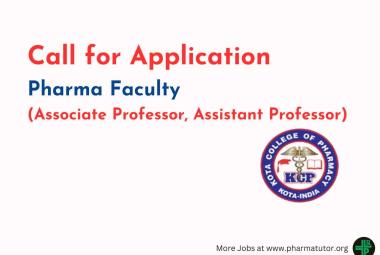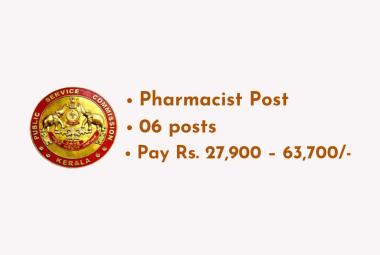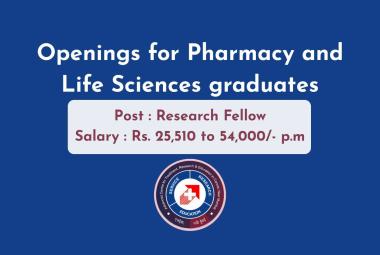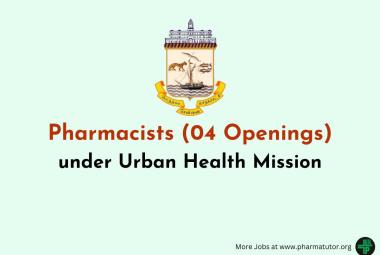ABOUT AUTHORS:
Monowar Hussain*, Geethalakshmi. A, Diwakar Srinivas G.
Department Of Pharmaceutics,
The Oxford College of Pharmacy,
Bangalore, Karnataka, India- 560068
*monowar250@gmail.com
ABSTRACT:
Carbopol934 (C934) pH-specific polymer and Pluronic-F127 (PF-127) polymer can be used to increase the bioavailability and therapeutic value of β-blockers (Betaxolol HCl) in glaucoma treatment by using in situ gelling system. Nine formulations (F1,F2,F3,F4,F5,F5,F6,F7,F8,F9) with different concentrations of C934 and PF127 were tested for Clarity, pH, Gelling Capacity, Gelation Temperature, Eye irritation, Isotonicity, in-vitro diffusion, Viscosity and Sterility. Compatibility test was performed using FT-IR for all the formulations. F3 with C934 (0.4% w/v) and PF127 (15% w/v) passed the entire test and gave the best result.
REFERENCE ID: PHARMATUTOR-ART-1849
1. INTRODUCTION:
Glaucoma is a major cause of visual loss. In glaucomatous optic neuropathy, there is optic disc cupping and atrophy and apoptosis of retinal ganglion cells and their axons, and possibly other retinal elements, leading to irreversible visual field loss. The IOP is usually elevated with visual field loss[1, 2].
In situ gels refer to polymer solutions which can be administrated as liquid, and undergo a phase transition to semisolid gel upon exposure to physiological environments. As a result, the residence time will be increased and have enhanced ophthalmic bioavailability which cannot be achieved by conventional liquid ophthalmic formulation due to lacrimal secretion and nasolacrimal drainage. The gelation can be triggered by temperature, pH and ion change polymers [3].
Advantages of in situ forming gel:
- Improved local bioavailability
- Reduced dose concentration
- Less total drug
- Improved patient acceptability
- Reduced dosing frequency
2. MATERIALS AND METHODOLOGY:
2.1.Materials:
Betaxolol hydrochloride sample was gifted from Medigraph Pharmaceuticals (P) Ltd. (Maharashtra), Pluronic acid F-127 was purchased from Sigma Aldrich Chemicals Pvt. Ltd.,
Benzalkonium Chloride from Merk specialities private limited, Mumbai and Cellophane membrane from HiMedia Laboratories pvt.ltd were purchased. Carbopo934 (Rolex chemical industries), Sodium Chloride (SDFCL), Sodium Bicarbonate (Ranbaxy Laboratories limited), Sodium Hydroxide (SDFCL),Calcium Chloride (SDFCL), Fluid Thioglycollate Medium (HiMedia Laboratories pvt.ltd.), and Soyabean-Casein Medium (HiMedia Laboratories pvt.ltd.) were obtained.
2.2.Methodology:
2.2.1. FT-IR study[4]:
The compatibility between the drug and polymers (Pluronic F-127, Carbopol934) were studied on FT-IR spectroscopy. Spectra of pure Betaxolol hydrochloride, pure Betaxolol hydrochloride and Pluronic F-127, pure Betaxolol hydrochloride and Carbopol934 and physical mixture of Betaxolol hydrochloride with Pluronic F-127, Carbopol934 were compared at 400 to 4000cm-1 is shown in Fig.2,3,4,5 & 6.
TABLE1:
2.2.2. Formulation chart of pH and Temperature triggered in-situ gelling system of Betaxolol Hydrochloride:
|
Ingredients |
Ingredient concentration(% w/v) |
||||||||
|
F1 |
F2 |
F3 |
F4 |
F5 |
F6 |
F7 |
F8 |
F9 |
|
|
Betaxolol hydrochloride |
0.25 |
0.25 |
0.25 |
0.25 |
0.25 |
0.25 |
0.25 |
0.25 |
0.25 |
|
Pluronic F-127 |
15 |
15 |
15 |
18 |
18 |
18 |
20 |
20 |
20 |
|
Carbopol934 |
0.2 |
0.3 |
0.4 |
0.2 |
0.3 |
0.4 |
0.2 |
0.3 |
0.4 |
|
Benzalkonium chloride (%V/V) |
0.02 |
0.02 |
0.02 |
0.02 |
0.02 |
0.02 |
0.02 |
0.02 |
0.02 |
|
Sodium chloride |
0.9 |
0.9 |
0.9 |
0.9 |
0.9 |
0.9 |
0.9 |
0.9 |
0.9 |
|
Dil.water upto (ml) |
100 |
100 |
100 |
100 |
100 |
100 |
100 |
100 |
100 |
2.2.3. Preparation of pH and temperature triggeredin situ gelling system of betaxolol hydrochloride:
The formulations were prepared using cold method. Drug and isotonicity adjusting agent was dissolved in distilled de-ionized water and kept in refrigerator. Required quantity of PF-127 was added and kept at 4°C with periodical stirring to ensure complete dissolution. Carbopol934 was used as a viscosity enhancing agent. In this case, required amount of viscosity enhancing agent was dissolved in hot water (80-90?C) with continuous stirring for complete dissolution of Carbopol934. The drug and isotonicity adjusting agents were then added. After cooling, the required amount of PF-127 were added in Carbopol934 solutions and kept in refrigerator at 4°C for complete dissolution of PF-127. The pH of all the formulations was measured and found in the range of 6-6.5. Benzalkonium chloride (BKC) (0.02%) was added as a preservative. The formulations were then subjected to terminal sterilization by autoclaving at 121°C and 15 psi for 20 min[5].
2.3.EVALUATION OF PREPARED IN-SITU GELLING SYSTEM:
2.3.1. Clarity and pH:
The general appearance of the formulation was observed which included colour and clarity of solution. The pH of the prepared formulations was checked by using pocket pen pH meter.
2.3.2. Drug content:
Drug content estimation was done by pipette out 1 ml (0.25 mg) of 0.25% sample solution diluted to 100ml with simulated tear fluid [Sodium chloride 0.670 g, 0.200 g sodium bicarbonate and 0.008 g calcium chloride 2H2O was dissolved in distilled water and diluted to 100.0 ml]. From the stock 1ml is pipette out diluted to 10ml with simulated tear fluid. The absorbance of the resulting sample solution was measured at 222.5 nm .The results are shown in table 3.
2.3.3. Gelling capacity:
The gelling capacity of the prepared formulations were determined by placing a drop of the formulation in a vial containing 2ml of freshly prepared simulated tear fluid and visually observed. The time taken for their gelling was noted[6]. The results are as shown in table 3.
2.3.4. Viscosity determination:
The viscosity measurements were done by using Brookfield DV-II+ viscometer using LV-2 spindle. The developed formulations were poured into the adapter of the viscometer and the angular velocity was increased gradually from 10 to 100 rpm. The angular velocity was reversed gradually. The average of the two readings was used to calculate viscosity. By adding STF the formulations were made into gel form and viscosity was determined as specified above using LV-3 spindle[6].
2.3.5. in vitro drug diffusion studies:
The in vitro diffusion of Betaxolol Hydrochloride from the formulations was studied through cellophane membrane using a Franz diffusion apparatus. The diffusion medium used was freshly prepared STF. Cellophane membrane, previously soaked overnight in the diffusion medium (STF), was placed in between the donor and receptor compartment. 1 ml volume of the formulation was accurately instilled into the donor compartment. STF was placed in the receptor compartment according to the capacity of it. The whole assembly was placed on the thermostatically controlled magnetic stirrer. The temperature of the medium was maintained at 37 ± 0.5°C. The magnetic bead was rotated such that it produced a vortex and touched the cellophane membrane. Aliquots, each 1 ml volume, were withdrawn at hourly intervals and replaced by an equal volume of the receptor medium. The aliquots were diluted with STF and analyzed by UV visible spectrophotometer at 222.5 nm[7].
2.3.6. Test for sterility:
Method/ Procedure: Tests for sterility were performed for aerobic and fungi by using fluid thioglycollate medium and soyabean casein digest medium.
Preparation of fluid thioglycollate medium: 29.3 g of fluid thioglycollate medium was dissolved in 1000 ml distilled water by boiling. Sterilized by autoclaving at 15 lbs pressure at 121°C for 20 min.
Preparation of soyabean-casein digest medium: 30 g of soyabean-casein digest medium was dissolved in 1000 ml distilled water. The medium was boiled to dissolve completely. Sterilized by autoclaving at 15 lbs pressure at 121°C for 20 minutes. The media used should comply with the following tests carried out before or in parallel with the test on the preparation being examined.
i) Sterility (negative control) test: Fluid thioglycollate media was incubated at 30-35°C and soyabean casein digest medium at 20-25°C for not less than 7 days. No growth of organisms was observed.
ii) Growth promotion (positive control) test: Here, the sterile media was inoculated with about 100 viable micro-organisms and incubated according to the conditions specified. The test media were satisfactory, if clear evidence of growth appears in all media within 7 days.
Ophthalmic preparations should be sterile and must be checked for the presence of any bacteria or fungi before it is used. In each test, three sterile test tubes were used in the study and are labelled as ‘negative control’, ‘test’ and ‘positive control’.
Test for aerobic bacteria:
20 ml each of sterile fluid thioglycollate was transferred to 3 tubes aseptically. The tube labeled as positive control was inoculated with viable aerobic microorganism Bacillus subtilis aseptically. 2.5 ml of the ophthalmic preparation was added to the tube labeled as test. Then all three test tubes were incubated at 30-35°C for not less than 7 days.
est for fungi:
20 ml each of sterile soyabean-casein digest medium was transferred to 3 tubes aseptically. The tube labelled as positive control was inoculated with Candida albicans aseptically. 2.5 ml of the ophthalmic preparation was added to the tube labelled as test. Then all the three test tubes were incubated at 20-25°C for not less than 7 days. The sterility testing of ophthalmic drug delivery system were performed for aerobic bacteria and fungi by using fluid thioglycollate medium and soyabean casein digest medium as per the IP Procedure[8].
2.3.7. Isotonicity evaluation:
Isotonicity is important characteristic of the ophthalmic. Isotonicity has to be maintained to prevent tissue damage or irritation of eye. F3 was subjected to isotonicity testing, since they exhibited good release characteristics and gelling capacity and the required viscosity. Formulations were mixed with few drops of blood and observed under microscope at 45X magnification and compared with standard marketed ophthalmic formulation. The shape of blood cell was compared with standard marketed ophthalmic formulation[9].
2.3.8. Eye irritation studies:
Two albino rabbits of both sexes weighing 2.0 to 2.5 kgs were used for the study. 0.1 ml of the selected formulation- F3 was instilled in the conjunctival sac of right eye of each rabbit and readings were observed at 1, 24 and 48 h. Eye was evaluated for injuries to the cornea, conjunctiva and the iris were scored separately. In the above studies, the left eye was served as control (without drug-placebo) and the right eye was served as test (sterile formulation). The scoring was given according to Draize irritancy scale[10].
2.3.9. Stability studies:
Stability studies were carried out on most satisfactory formulations (F2, F3, and F5) as per ICH Guidelines. Sterile gel forming ophthalmic solution were filled in autoclavable transparent plastic bottles, closed with autoclavable rubber closures and sealed with aluminium foils. The formulations were kept in stability chamber of at 40 ± 2°C & 75 ± 5% RH for 2 months. Samples were evaluated for drug content, pH and Clarity, gelling capacity, isotonicity and in vitro diffusion.
3. RESULTS:
3.1. Drug and excipients compatibility study by FT-IR:
Fig 4: FT-IR spectra of pure Betaxolol Hydrochloride & Carbopol934
Figure 6: FT-IR of F3 after stability study of F3
TABLE 2: Functional group in FT-IR spectra for Betaxolol hydrochloride & polymers:
|
Sr. No. |
Description |
Frequency range (Wave number) |
|
1 |
O-H Stretch |
3200 cm-1 |
|
2. |
C-H Stretch |
2954 cm-1 |
|
3. |
C-H Stretch |
2835 cm-1 |
|
4. |
C=O Stretch |
2384 cm-1 |
|
5. |
C=C Stretch |
1595 cm-1 |
|
6. |
C=C Stretch |
1483 cm-1 |
|
7. |
C-O Stretch |
1257 cm-1 |
|
8. |
C-O Stretch |
1074 cm-1 |
|
9. |
C-H Bend |
819 cm-1 |
|
10. |
C-H Bend |
632 cm-1 |
Table 3: Evaluation of ophthalmic pH triggered & temperature dependent in situ gelling systems of Betaxolol hydrochloride:
|
Formulation Code |
Drug Content (%) |
Visual appearance |
Clarity |
Gelling capacity |
Gelation temp.(?C) |
pH |
|
F1 |
96.71±0.339 |
Transparent |
Clear |
+ |
32.15±0.07 |
6.1 |
|
F2 |
95.16±0.523 |
Transparent |
Clear |
++ |
30.66±0.91 |
6.0 |
|
F3 |
93.98±0.127 |
Transparent |
Clear |
+++ |
29.07±0.10 |
6.0 |
|
F4 |
92.45±0.381 |
Transparent |
Clear |
++ |
37.85±0.07 |
6.3 |
|
F5 |
96.98±0.374 |
Transparent |
Clear |
+++ |
36.3±0.14 |
6.0 |
|
F6 |
96.28±0.155 |
Transparent |
Clear |
+++ |
36.55±0.21 |
6.5 |
|
F7 |
94.97±0.297 |
Transparent |
Clear |
+ |
36.50±0.14 |
6.2 |
|
F8 |
93.08±0.098 |
Transparent |
Clear |
+++ |
35.60±0.14 |
6.1 |
|
F9 |
96.51±0.198 |
Transparent |
Clear |
+++ |
34.75±0.21 |
6.4 |
+: Gels after few min, remains for upto 2-3 h. ++: Gelation immediate remains for upto 4-6 h.
+++: Gelation immediate remains for upto 7-9 h.
Table 4: Stability study readings after 3 months at 40 ± 2°C& 75 ± 5% RH (best formulation)
|
Formulation code |
Drug content (%) |
Clarity |
pH of the solution |
Gelling capacity |
Isotonicity |
|
F2 |
95.53±1.45 |
partial turbid |
5.8 |
++ |
Isotonic |
|
F3 |
94.0±2.78 |
clear |
6.0 |
+++ |
Isotonic |
|
F5 |
97.17±1.45 |
partial turbid |
6.2 |
+++ |
Isotonic |
Table 5: in-vitro drug diffusion studies:
|
Formulation code |
% cumulative drug diffused |
|||||||||
|
1H |
2H |
3H |
4H |
5H |
6H |
7H |
8H |
9H |
10H |
|
|
F1 |
4.926 |
9.382 |
13.838 |
20.676 |
29.514 |
38.102 |
47.558 |
54.00 |
55.205 |
55.323 |
|
F2 |
6.176 |
17.176 |
29.788 |
41.858 |
51.223 |
57.847 |
62.776 |
66.717 |
68.847 |
69.647 |
|
F3 |
6.564 |
17.258 |
26.129 |
33.705 |
41.611 |
51.694 |
63.023 |
72.082 |
78.352 |
81.870 |
|
F4 |
2.611 |
9.305 |
18.505 |
28.188 |
37.141 |
44.129 |
48.20 |
50.635 |
52.341 |
52.929 |
|
F5 |
5.082 |
16.447 |
27.964 |
35.858 |
42.870 |
50.976 |
58.976 |
66.60 |
73.682 |
78.301 |
|
F6 |
2.470 |
9.682 |
20.188 |
30.447 |
40.752 |
48.494 |
53.905 |
59.517 |
62.482 |
62.894 |
|
F7 |
3.176 |
9.988 |
18.894 |
28.223 |
37.80 |
47.247 |
54.282 |
58.929 |
60.976 |
61.211 |
|
F8 |
3.211 |
10.611 |
20.682 |
29.717 |
38.905 |
45.835 |
48.376 |
48.781 |
49.458 |
49.976 |
|
F9 |
2.223 |
12.564 |
25.141 |
35.541 |
43.117 |
48.388 |
51.776 |
53.447 |
54.082 |
54.20 |



